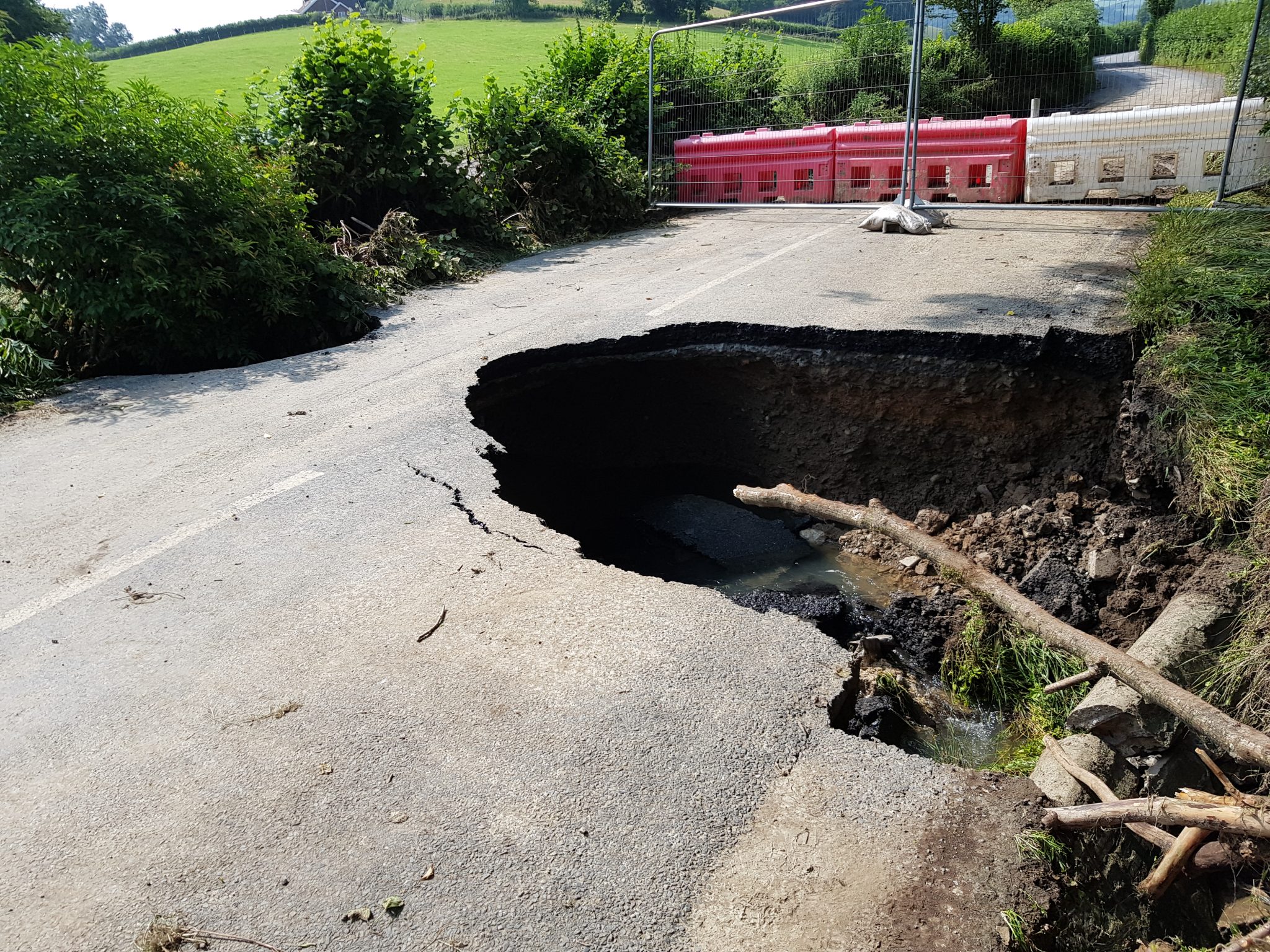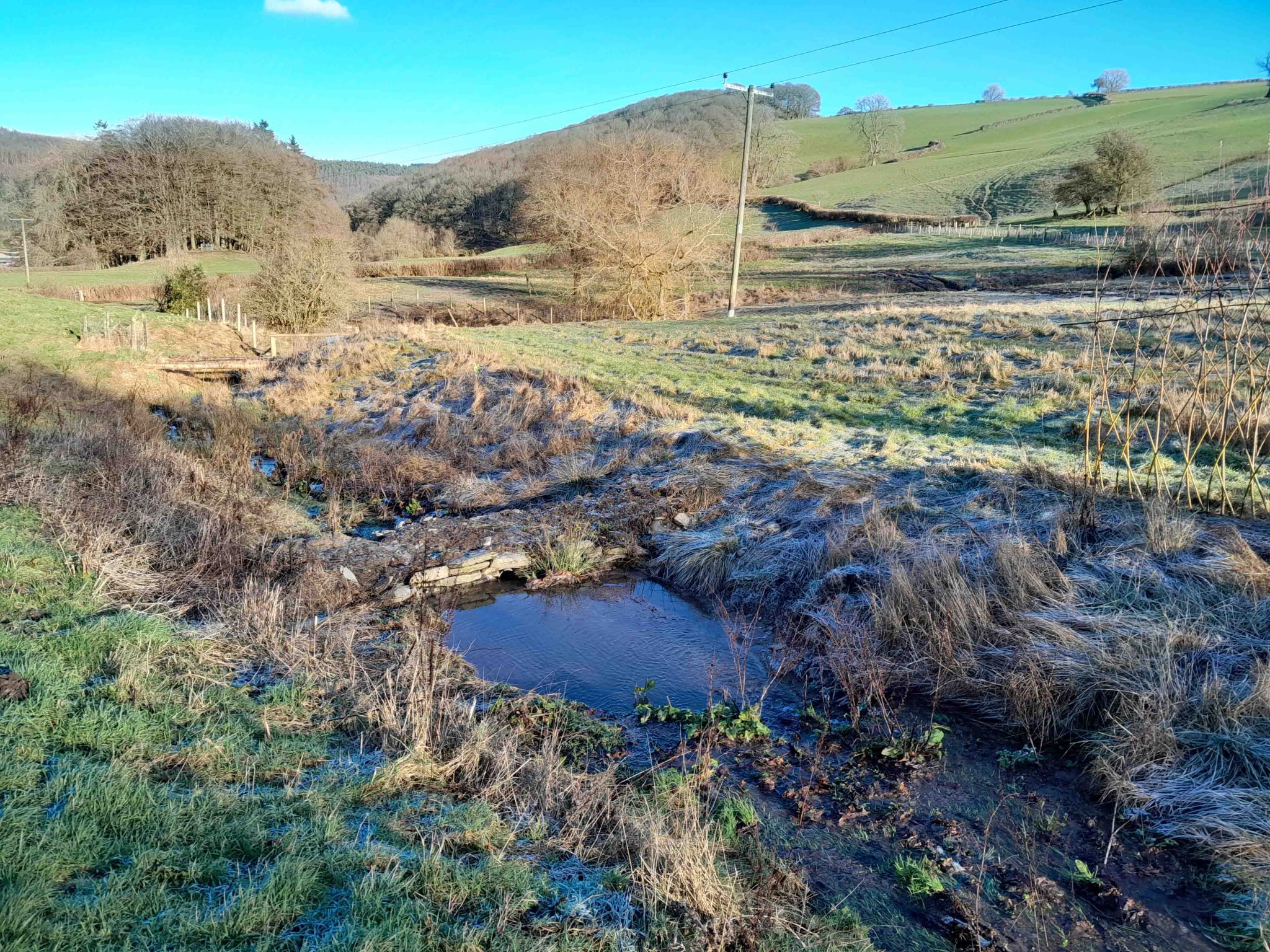January 2024
At Castell-y-Cnwclas (Knucklas Castle) in Mid Wales, local legend has it that King Arthur once threw the head of a giant he had killed into the nearby river Teme. Using it to cross the water, he commanded that it turn to stone, shouting “tyfed yr iad” and thereby giving the river its Welsh name: Afon Tefeidad.
The Teme rises on the slopes of Cilfaesty Hill in Powys and is reputed to be one of the fastest rivers in the UK. From source, it flows in an easterly direction through the narrow valley of Cwm Gwyn to Felindre, around where it becomes the border between Wales and England. The river then enters a wider floodplain on its way to Knighton, entering England wholly another five miles downstream of the market town.
 At 81 miles in length, the Teme is the second largest tributary of the River Severn (after the Warwickshire Avon). There is some evidence, however, that it was once a tributary of the Wye. Studies in the 1920s and ’30s showed that the Teme’s pre-glacial course in England took it south, instead of its current easterly direction to where it now joins the Severn at Powick, in Worcestershire. The “new” course of the river is believed to be around 15,000 years old.


The remains of Kucklas Castle is in the middle right of this image. The Teme can be seen in the top left hand side.
The upper Teme above Knighton. Severn Rivers Trust have planted over 20,000 trees in the catchment as part of their natural flood management work.
The upper Teme valley has associations with giants other than those from Arthurian legend. In her book “Upper Teme Valley Memories” Beth Williams describes how excavations at Heyope Church in the early 1900s uncovered skeletons of men over 6 foot 6 tall, all of whom had had their skulls fractured with a weapon. Prince Llewellyn is said to have attacked Knucklas castle in the 1200s, killing the “Giants of Bron Wrgon” and, like Arthur, using their bodies to cross the river.
For this “River of the Month,” our focus is its upper reaches of the Teme in Wales where it passes over the shales and mudstone typical of many rivers in the Welsh Marches. The river here is home to a range of protected flora and fauna (it is designated a Site of Special Scientific Interest throughout its length). As well as being an important spawning and juvenile habitat for salmon, the upper Teme has populations of Atlantic stream crayfish (Austropotamobius pallipes) and freshwater pearl mussel (Margaritifera margaritifera). The upper river has also been a brown trout fishery of particular note (grayling are found only in the English sections). In the early 1900s, upper river fishery owners were reported reluctant to allow fish passage work at several lower river weirs because they thought it would damage the quality of the Teme’s trout fishing.

Where the Teme forms the border between Wales and England downstream of Knighton, it is host to large beds of ranunculus.
One interesting characteristic of the upper river is the propensity for sections of the bed to dry up completely. Williams mentions the porous nature of the geology as one of the reasons why the valley was not chosen in the late 1800s to provide Birmingham with a new water supply. Deemed unsafe to build dams, the attention of the engineers of the time turned away from the Teme Valley and instead focused on the Elan, as described in our December River of the Month.
The sporadic drying up is not a new event and the Teme is renowned for it during the summer months. In 1870, for example, many miles of the upper river were reported dry. More recently, however, these occurrences appear to be happening earlier in the year. In 2020, parts of the river were dry in late May. Then, as in previous years, the Environment Agency conducted fish rescues, removing brown trout and juvenile salmon that had become trapped in stagnant pools where they were vulnerable to suffocation and predation, before relocating them to parts of the river still flowing.

A dried-up section of the Teme between Knucklas and Knighton in July 2023.


A section of the B4355 blown out by a flash flood on a Teme tributary stream near Lloyney in August 2020.Â
Series of leaky dams in high gradient feeder streams are one of the many natural flood measures installed in the Teme catchment by the Severn Rivers Trust.
The “flashy” nature of the river’s extreme flows is not just a threat to ecology, they add to the flood risk of the many towns along the Teme Valley and the even larger conurbations of the lower Severn catchment. For the past few years, the Severn Rivers Trust has been carrying out “natural flood management” work in the upper Teme catchment. To date, they have worked with over 30 landowners, installing over 300 leaky woody structures on approximately 20km of tributary stream. These hold back water, allowing it to enter the rivers at a slower pace and helping to reduce flood peaks. The trust has also planted over 20,000 trees in the upper Teme, amongst other work to help reduce the pace of water draining the catchment.
This work will be needed. The Teme’s flood peaks are predicted to increase by more than 20% over the next 20 years. Flood barriers are important in protecting homes from the devastating effects of flooding, but they will only go so far. Given our increasingly extreme weather patterns, effective flood defence in the future will depend on a range of measures, including changes in land management throughout river catchments.
Our thanks to the Severn Rivers Trust for their help with information and photos.
References & More Information:
“Upper Teme Valley Memories” Beth Williams, 2023
“New evidence for the glacial diversion of the River Teme near Ludlow, Salop” P. Cross, J.M. Hodgson, Proceedings of the Geologists’ Association, 1975
River Teme Site of Special Scientific Interest Citation, 1996

